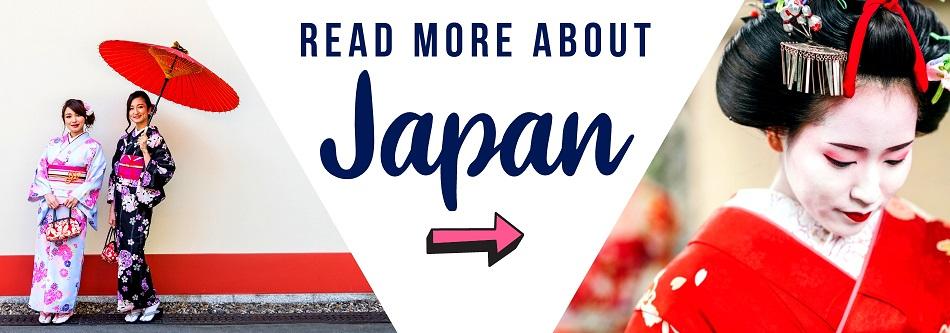This guide is everything you need if you plan to backpack in Japan. From budget to itinerary and things to do, I’ve covered everything. Japan is a beautiful country with a rich history and it has many places that you should include on your itinerary.
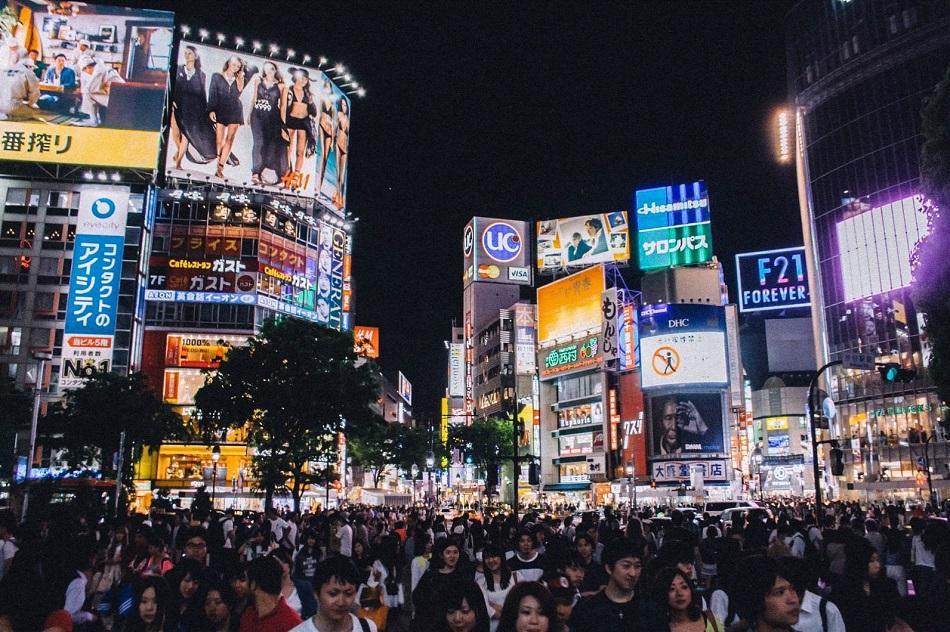
1. Practical information
- Currency: ¥ – Yen ($1 = 170 ¥)
- Time: GMT +9 hours
- Capital city: Tokyo
- Main language: Japanese
- Main religion: Shinto and Buddhism
- Telephone code: +81
- Emergency numbers: Ambulance & Fire (119) Police (110)
2. Usual phrases in Japanese
Most Japanese know a bit of English but learning a few phrases in Japanese is always a good idea. Trust me, you’ll make a great first impression! Below are a few basic phrases that will come in handy when backpacking Japan.
- Welcome – irasshaimase
- Hello – Konnichiwa
- Thank you – arigatou gozaimasu
- Please – onegaishimasu
- How are you? – Genki desu ka
- How much? – ikura desu ka?
- Sorry – gomen nasai
- Yes – hai
- No – iie
- I don’t speak Japanese – nihongo ga wakarimasen

3. Do you need a visa in Japan?
Before deciding to backpack in Japan, make sure to read all about the visa requirements. You don’t want to be denied access to Japan when landing at the airport. All EU citizens and the citizens of a few other countries are not required to have a visa if they plan to stay less than 90 days in Japan.
You can read more about the visa requirements here.
4. When to visit Japan
Japan is a year-round destination. Every season has its own charm and there are things to see and do anytime of the year.
Some people hate the cold, some people hate the crowds. One thing is sure – when backpacking Japan you’ll have to choose what you hate the most – the cold weather or the crowds. See below what makes each season unique.
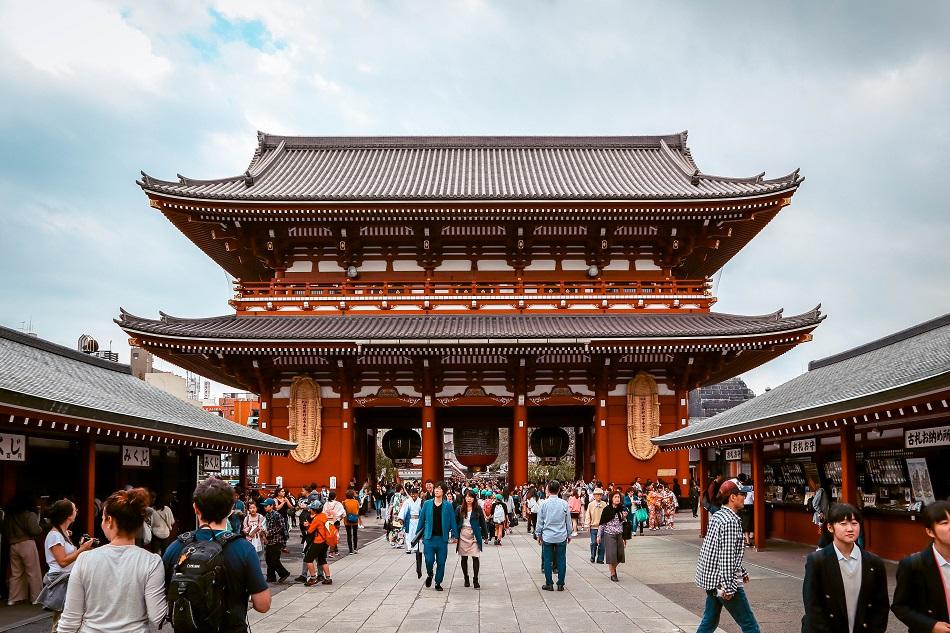
Backpacking Japan in spring – this is the busiest season in Japan due to the beautiful cherry blossoms. People come from all around the world to see millions of pink cherry flowers and for the locals, this is a popular season for honeymoons. If you want to find out which are the best places to see the cherry blossoms in Japan, click here.
Backpacking Japan in summer- even though summer is not as busy as spring, you’ll still find lots of tourists around the country. Summer is the perfect time to visit Japan if you plan to visit the coastal part of the country or if you want to go to the beach.
No time to read now? Pin it for later!


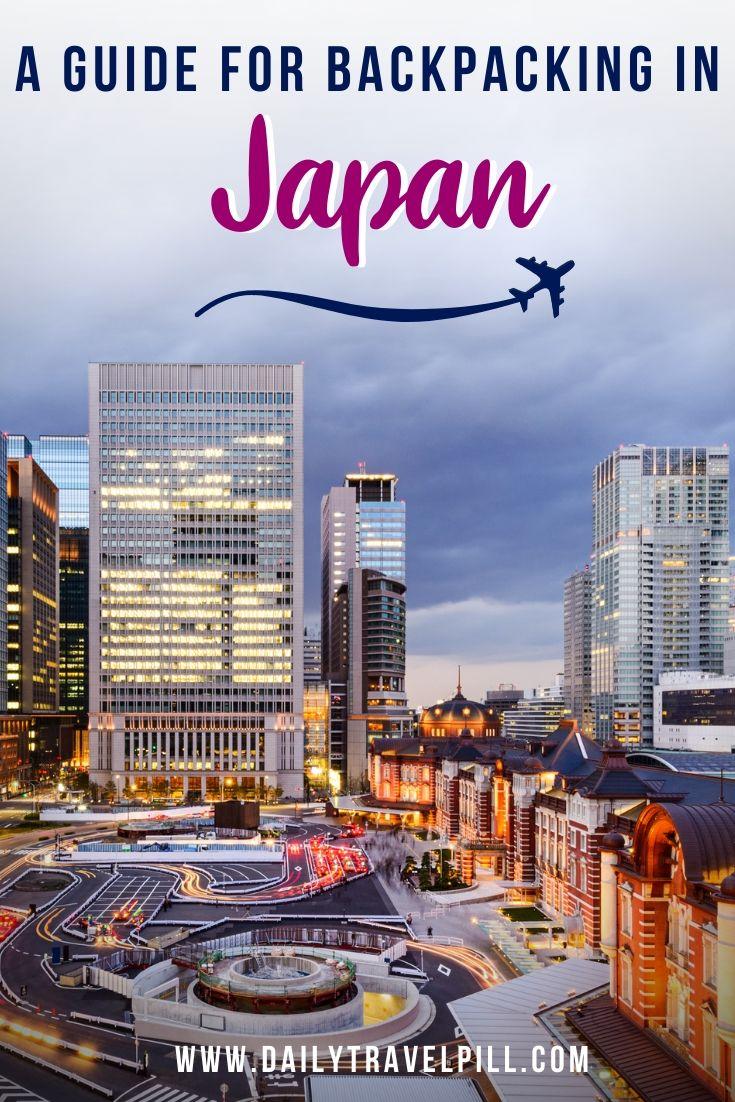
Backpacking Japan in autumn – the colorful autumn leaves, also known as koyo in Japanese, attract lots of curious tourists. The spectacle of orange, red, and yellow leaves is truly amazing. However, keep in mind that in October the temperatures start to drop and you’ll need an extra layer of clothes to keep you warm.
Backpacking Japan in winter – do you like skiing? In Japan you’ll find some incredible ski resorts with some of the best slopes in the world. Even if you’re not into winter sports, you can still explore Japan in winter. Go to an onsen, eat some tasty local food, and explore the local culture.
That being said, Japan is a great place to visit any time of the year. You’ll find lots of activities to do no matter the season. I visited Japan in autumn and I absolutely loved it!
5. Etiquette in Japan
Japan has a fascinating and contrasting culture. On one hand, Japan’s culture dates back centuries ago and on the other hand, Japan’s youth is developing new cultural and technological trends that are bound to push the boundaries.
Manners are very important among the Japanese and there are a few things you should be aware of when visiting this fascinating country.
Japanese greet each other by bowing – from a simple nod of the head (informal) to a deep bend at the waist (very formal). Tourists are not expected to know the bowing etiquette. When meeting someone new, simply bow your head.

When entering a Japanese home, you have to remove your shoes. Even some restaurants and temples will require you to remove your shoes. Make sure to put yours neatly and use slippers if offered.
Tipping in Japan is not required nor expected. If you tip someone, most probably that person will try to give your money back. The Japanese are satisfied with their salaries so don’t feel bad about not tipping.
Tattoos are considered taboo in Japan. People associate them with the Japanese mafia or the Yakuza gang. Even though you won’t get more than a few weird looks on the street for having a tattoo, keep in mind that you can be denied access to onsens and spas for having one.
If you want to eat in public, think twice. You’re not expected to eat in public unless you’re very close to the place where you bought your food. You’ll notice that some Japanese make a lot of noise when eating their soup and that’s fine. It’s supposed to help the flavor unfold.
When on the subway or train, make sure to set your phone on silent mode. On most subway trains you’ll see signs saying that talking on the phone is prohibited.

When using an escalator, make sure to stand on the left side unless you’re in Osaka. People in Osaka stand on the right side of the escalator.
There are lots of things you have to keep in mind when planning a backpacking trip to Japan and the etiquette is one of the most important aspects. When traveling to a new country, with a different culture than yours, you need to be respectful and mindful of the local customs.
6. Backpacking in Japan – BUDGET

Japan is an expensive country. However, it really depends on where you’re coming from. If you’re from SE Asia or Eastern Europe, the prices in Japan might seem through the roof. If you’re from the USA or Western Europe, the prices might not seem that high.
To make things clear, I will tell you which are the daily costs of backpacking in Japan.
- Budget – $90 per day
- Mid Budget – $175 per day
- Luxury – over $300 per day
There is no standard backpacking budget for Japan. It depends on how much you want to spend on accommodation, food, and other activities.
If you’re on a tight budget, you’ll have to sleep in shared dorm rooms. For a bed, expect to pay somewhere around $20. If you want to save some money on food, try the street food or the 7-Eleven (put aside around $20 for food each day). You’ll also need some money for tourist attractions, transport, and miscellaneous.

On a more mid-range budget of $175 per day you’ll get a private room in a nice hotel and you’ll be able to eat at some nice restaurants. Moreover, you’ll have more money for fun activities.
If you’re one of those lucky ones traveling in the luxury category, invite me with you on your trip! Kidding but not really. For $300 per day, you can stay at traditional Japanese hotels, splurge on high-end restaurants, and pretty much afford anything you want.
7. Money saving tips & tricks
Okay, so you’re on a really tight budget and you want to save as much money as possible. I am here to help you! While the prices above might seem like a lot for some of you, there are a few ways to save money while backpacking Japan.
- Visit less touristy cities – big cities like Tokyo and Kyoto tend to be more expensive. The high number of tourists only leads to higher prices. If you want to save some money on accommodation and other costs, head to less popular destinations. Go visit Nara or Nagano.
- Visit the free tourist attractions – there are many temples, museums, gardens, and shrines in Japan where you don’t have to pay an entrance fee. Take advantage and visit them!
- Buy a JR Pass – if you’re planning to spend a longer time in Japan, it’s best to buy a JR Pass. With this pass, you’ll get free rides on almost all trains inside Japan and you’ll save lots of money on transport.
- Split accommodation costs with someone – backpack Japan with a friend and you can save lots of money! For a private double room, you can end up spending less per person than for a bed in a shared room. How cool is that?
- Eat at 7-Eleven – during my trip to Japan, I ate a lot at 7-Eleven and Family Mart. You can find these supermarkets pretty much anywhere and they offer tasty meals for just a few dollars.
- Cook your food – are you a good cook? Book a hostel with a kitchen and cook your meals. It’s much cheaper than eating out.
- Shop at 100 yen stores – you’ll find many 100 yen-stores all around Japan. Here you can shop for groceries, household items or small electronics.
You don’t have to break the bank when visiting Japan. Even if you plan a longer trip to this beautiful country, there are ways to keep your budget in check.
8. Transport in Japan
Transport in Japan is fast and reliable but it’s definitely not cheap. However, there are a few tips & tricks to help you save money. You’ll find more details below.
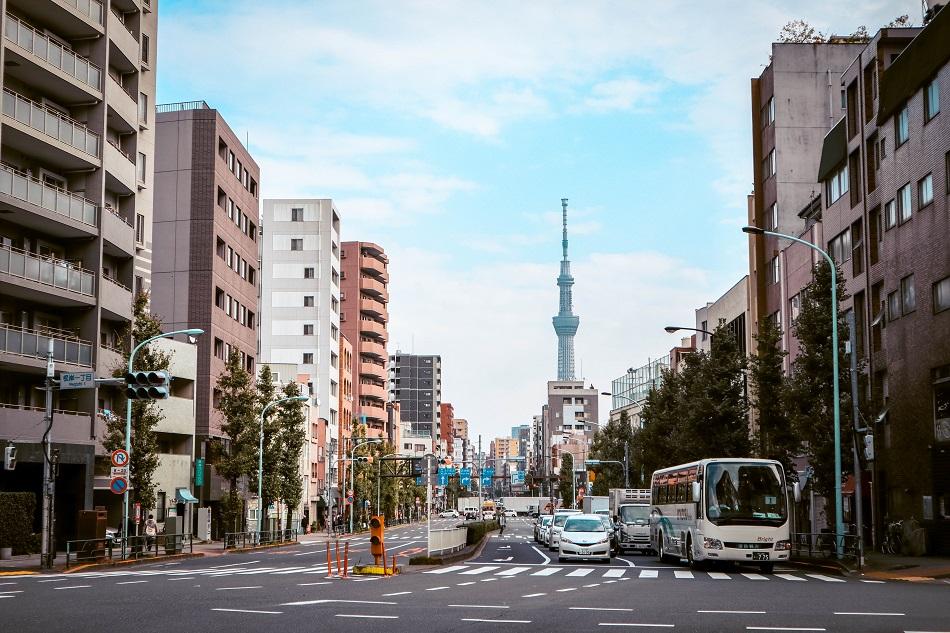
Subway
All big cities in Japan have a subway system. A ride usually costs around $2, depending on the length of the journey. If you plan to use the subway a lot, I recommend getting a subway pass.
- Tokyo Subway Pass – unlimited rides
- Osaka Pass – free transport around the city and discounts for major tourist attractions
- Kobe Pass – free transport around the city and discounts for major tourist attractions
Buses
Buses are more affordable than trains but they take more time. You can find bus connections for all major cities. There are buses between Osaka and Tokyo too but the ride is going to take 10 hours while the train takes only 2 hours.
Buses are a great alternative if you have plenty of time to spend in Japan. If you’re visiting the country for only a few days or less than 10 days, it’s best to buy a JR Pass for unlimited train rides.
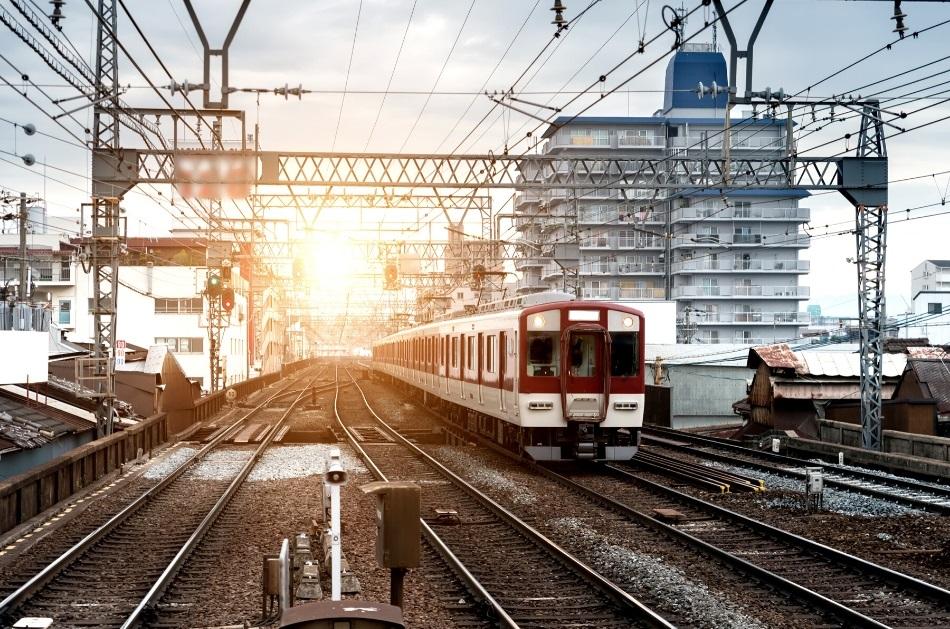
Trains
Everybody knows that trains in Japan are super-awesome and super-fast. They’ve actually become a real tourist attraction. Everyone wants a ride on the bullet train. I can’t argue, it’s an incredible experience!
If you plan to use the train to travel between several destinations , I highly recommend getting a JR Pass. This pass will grant you free and unlimited rides on all JR lines. You can travel with the JR Pass between cities like Hiroshima, Nagasaki, Osaka, Nara, Kyoto, Tokyo, Nagano, and many others.
Good to know: buying the JR Pass online is much cheaper but you can also buy this pass directly from Japan from the following stations: Sapporo, Sendai, Niigata, Tokyo, Shinjuku, Yokohama, Nagoya, Osaka, Hiroshima, Takamatsu, and Hakata.
Planes
You can easily travel by plane in Japan. The prices are usually comparable with the bullet train prices. There are many domestic airports across the country. Some cities that have an airport are – Osaka, Hokkaido, Tokyo, and Nagasaki.
9. Backpacking Japan itinerary
If you’re planning to spend 3 weeks in Japan, I have the perfect itinerary for you! If you plan to visit Japan for a few days or maybe 2 weeks, you can mix & match the destinations below.
For each backpacking destination in Japan, I will tell you which are the tourist attractions you should visit, how many days I recommend spending there, and which is the best accommodation for backpackers.
It’s up to you to decide which is the best backpacking Japan route for you!
Backpacking Nagasaki

Located on the island of Kyushu, Nagasaki is the last city in the world to ever be hit by a nuclear bomb. What sets this city apart is the Dutch and Portuguese influence.
- Why you should visit – important historical city
- How many days – 2 days
- Places to visit – Nagasaki Atomic Bomb Museum, Dejima, Peace Park, Chinatown, Glover Garden, Suwa Shrine, Mt. Inasa.
- Recommended accommodation – Nagasaki Royal Chester Hotel (excellent value for money, good location, clean & spacious rooms)
- Further reading
- 15 best things to do in Nagasaki – click here
- First timer’s guide to Nagasaki – click here
Backpacking Hiroshima

Hiroshima was the first city hit by an atomic bomb during World War Two. The consequences were disastrous but luckily, the locals have rebuilt their city and now Hiroshima is a thriving, beautiful place.
Good to know – If you want to save some money, I recommend getting a Hiroshima Tourist Pass. This pass will grant you unlimited rides on buses, streetcars, and Miyajima ferries.
- Why you should visit – Hiroshima has a rich history and beautiful temples
- How many days – 2 days
- Places to visit – Atomic Bomb Dome, Peace Memorial Museum, Miyajima Island, Itsukushima Shrine, Hiroshima Castle, Bay Dinner Cruise, Hijiyama Park, Mitaki-dera Temple.
- Recommended accommodation – Kamon Hotel Setuo (excellent location, clean rooms, super-friendly staff)
- Further reading
- Things to do in Hiroshima – click here
Backpacking Osaka
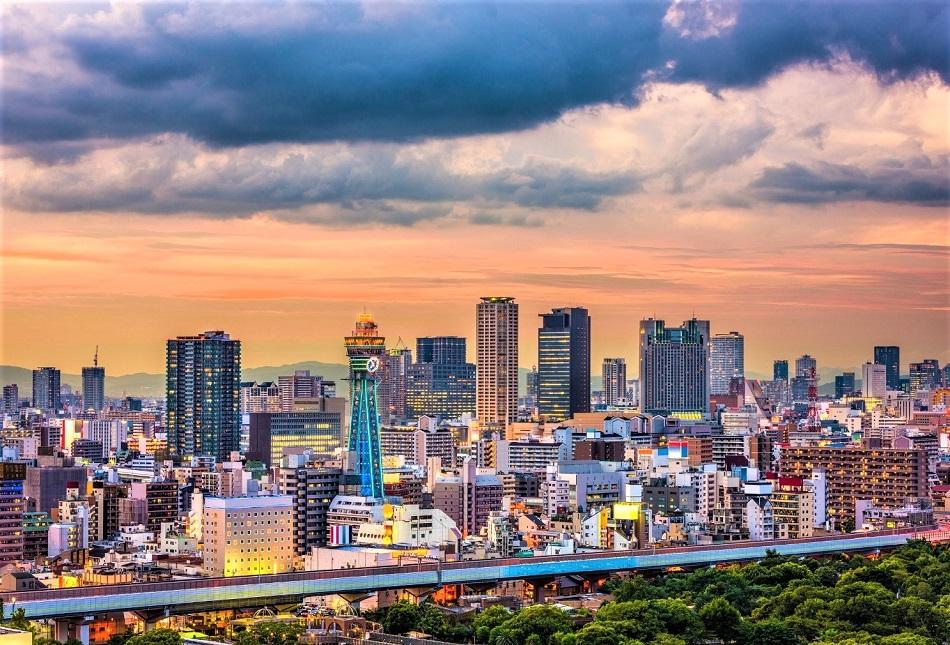
This vibrant city is the second largest in Japan and one of my favorites. It has an incredible nightlife, a delicious cuisine, and it is home to one of the best amusement parks in the world – Universal Studios Japan.
- Why you should visit – enjoy the nightlife, find out more about the city’s fascinating history
- How many days – 4 days
- Places to visit – Universal Studios Japan, Osaka Pokemon Center, Osaka Castle, Shitenno-Ji Temple, Abeno Harukas, Shinsekai, Dotonbori,
- Recommended accommodation – Rakuten Stay (good location, very clean rooms, beautiful design, excellent staff)
- Further reading
- Free things to do in Osaka – click here
- A guide to Pokemon Center Osaka – click here
- The best rides at Universal Studios Japan – click here
- One day in Osaka itinerary – click here
Backpacking Nara
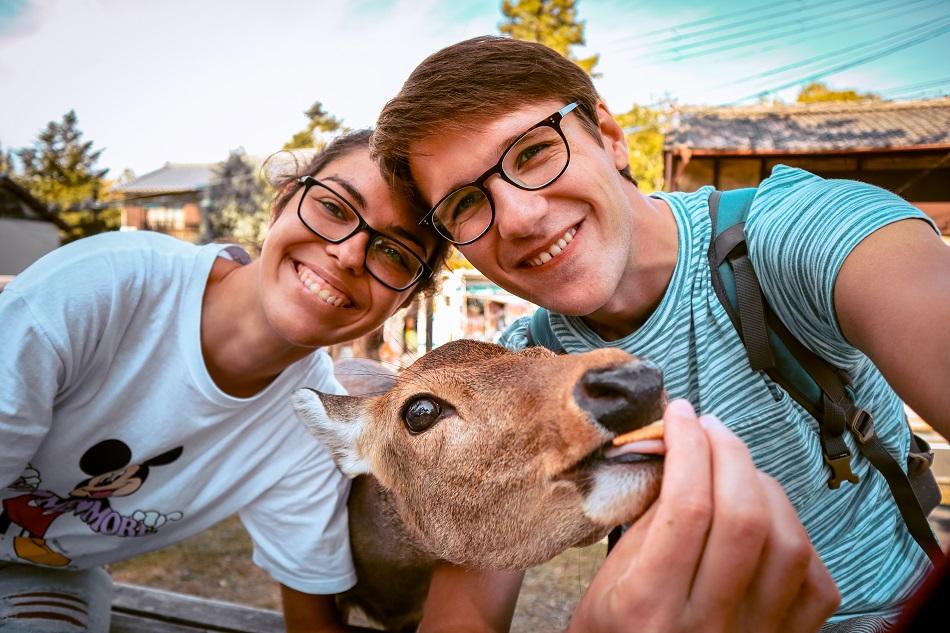
Are you ready to befriend some deer? Nara is the cutest city in Japan! Here the deer are free to wander around the city and on top of that, they’re super-friendly! My visit to Nara was one of the highlights of my backpacking journey across Japan.
- Why you should visit – befriend the deer, admire the beautiful temples
- How many days – 1 day (you can visit as a day trip from Osaka)
- Places to visit – Nara Deer Park, Tōdai-ji Temple, Neiraku Museum and Garden, Yoshiki En Garden, Higashimuki Street
- Recommended accommodation – Nara Ugaya Guesthouse (comfortable and clean rooms, friendly staff)
- Further reading
- Osaka to Nara day trip – all you need to know – click here
Backpacking Kobe

Located on the island of Honshu, Kobe is one of the most visited cities in Japan. Here you can find lots of temples, some impressive waterfalls, and the tastiest beef in the world – Kobe beef.
- Why you should visit – great food, breathtaking scenery
- How many days – 2 days
- Places to visit – Akashi Kaikyo Bridge, Mount Rokko, Kobe Port Tower, Sake brewery, Ikuta Shrine, Tetsujin 28 Statue, Kobe Maritime Museum, Nunobiki Falls
- Recommended accommodation – Hostel Anchorage (good location, very clean & modern, friendly staff)
- Further reading
- 1-day Kobe itinerary – click here
- 18 things to do in Kobe – click here
Backpacking Kyoto
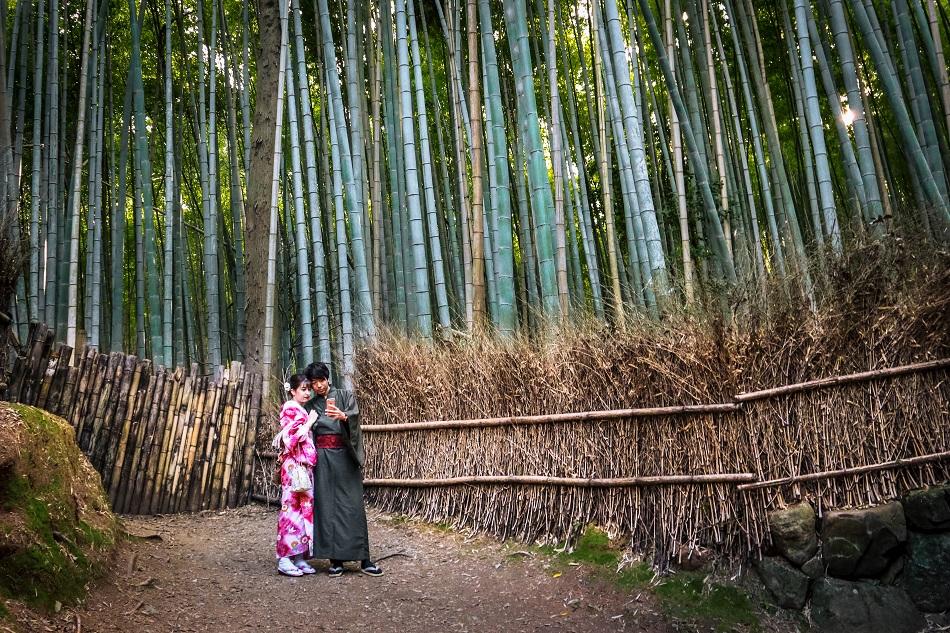
Kyoto is home to 1600 Buddhist temples and 400 Shinto shrines, making it the perfect place to immerse yourself in the Japanese culture. This beautiful city is the place where part of the famous “Memoirs of a geisha” movie was filmed. And yes, you can see real-life geishas here.
- Why you should visit – incredible culture, beautiful temples, geishas
- How many days – 2 days
- Places to visit – Gion, Arashiyama Bamboo Forest, Fushimi Inari Shrine, Nishiki Market, Teramachi Street, Kyoto Tower, Yasaka Shrine
- Recommended accommodation – Sanjo Okawa (good location, clean & spacious rooms, good WiFi, access to washing machine)
- Further reading
- Arashiyama Bamboo Forest guide – click here
- Kyoto or Osaka – which one to choose? – click here
- 1-day Kyoto itinerary – click here
- Nishiki Market & Teramachi Street guide – click here
Backpacking Kawaguchiko
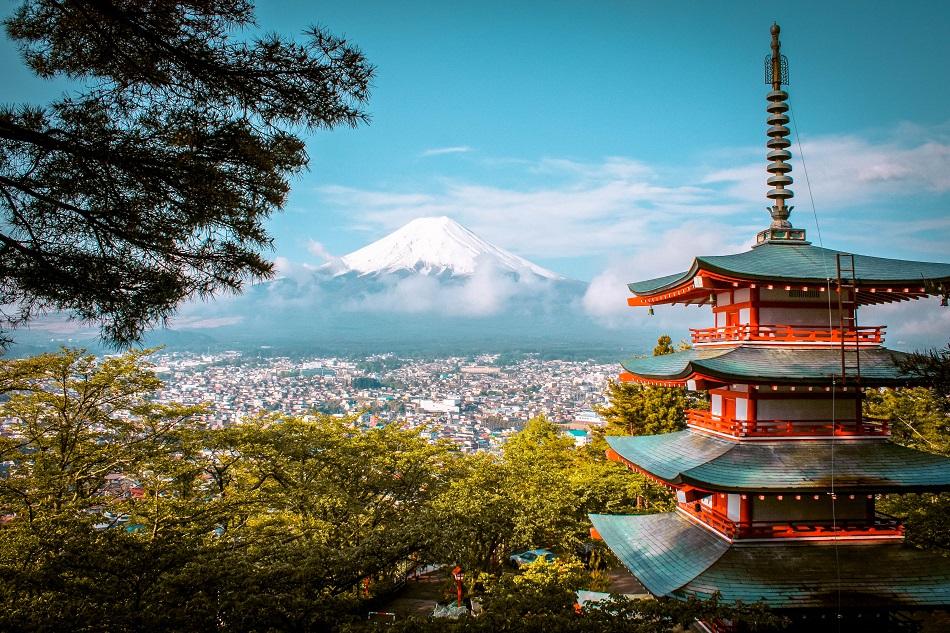
There is one place that you can’t miss when backpacking Japan – Mount Fuji. This iconic volcano is a true wonder of nature. There are several viewpoints from where you can admire Mt. Fuji but in my opinion, the best one is Kawaguchiko.
- Why you should visit – awesome views towards Mount Fuji
- How many days – 1 or 2 days (you can visit as a day trip from Tokyo)
- Places to visit – Kawaguchiko promenade, Chureito Pagoda, Fuji-Q Highland Theme Park, Mount Fuji Ropeway, Oishi Park, Fuji Omuro Sengen Shrine
- Recommended accommodation – Togawaso (good location, beautiful view toward Fuji, Japanese-style rooms, friendly staff)
- Further reading
- A day trip from Tokyo to Kawaguchiko – click here
Backpacking Tokyo
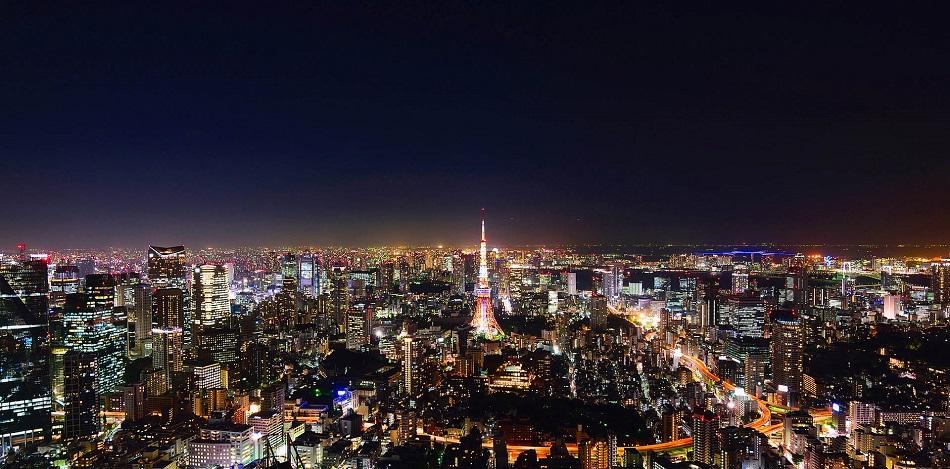
Welcome to the city that never sleeps. Tokyo is the biggest and most visited city in Japan. Here you can find some awesome temples, colorful streets, and endless shopping malls. Are you ready?
- Why you should visit – incredible nightlife, rich culture
- How many days – 4 days
- Places to visit – Gotokuji Temple, Shibuya Crossing, Harajuku, Tokyo Metropolitan Building, Kabukicho, Tokyo Disneysea, Robot Restaurant, Pokemon Center Mega Tokyo, Senso-ji Temple, Tokyo Tower
- Recommended accommodation – Emblem Hostel (good location, gym, clean rooms, access to train/ subway)
- Further reading
- Everything about Tokyo’s Cat Shrine – click here
- 10 incredible things to do in Harajuku – click here
- Pokemon Center Mega Tokyo guide – click here
- One day in Tokyo – the perfect itinerary – click here
Backpacking Nagano

Have you ever heard about the snow monkeys? Nagano is where you can find them! People from all around the world come here to see the famous snow monkeys bathing in hot springs. Quite a view!
- Why you should visit – snow monkeys, winter sports, beautiful temples & shrines
- How many days – 2 days
- Places to visit – snow monkeys at Jigokudani, Zenkoji Temple, Togakushi Shrine
- Recommended accommodation – Chisun Grand Nagano (good location, good WiFi, spacious rooms, great amenities)
- Further reading
- 10 places to see in Nagano – click here
Backpacking Matsumoto

If you’d like to visit a less touristy place, I recommend Matsumoto. Matsumoto is just a short train ride away from Nagano and it’s home to an incredible castle
- Why you should visit – less touristy
- How many days – 1 day
- Places to visit – Matsumoto Castle, Daio Wasabi Farm
- Recommended accommodation – visit it as a day trip from Nagano
- Further reading
- 10 things to do in Matsumoto – click here
There are many backpacking destinations in Japan to choose from and there’s something for everyone. Japan is an amazing country and it has a lot to offer to any tourist.

10. Weird and fun activities to try in Japan
- Helicopter ride over Tokyo – this is the coolest thing you can do in Tokyo and for a helicopter ride it’s not that expensive! I’d go in a heartbeat!
- Okinawa Street Go Karting – what would you say about exploring Okinawa on a go kart? All you need is an international driver’s licence to enjoy this experience! You can even dress in a variety of costumes. I’d be a Minion!
- Okinawa diving – swim alongside turtles and discover the marine life in Okinawa!
- Tokyo Bay Dinner Cruise – enjoy e full-course meal while admiring Tokyo. A cruise is a fun and unusual way to explore Tokyo.
- Rent a kimono in Tokyo – wear a traditional Japanese kimono and take some gorgeous photos. Choose your favorite design and enjoy this unique experience!
- Take the Sagano train – this is considered to be the most beautiful scenic train ride in Japan. Embark on a 25-minute train ride and admire the views.
- Buy a Tokyo nightclub pass – have fun in 7 different awesome nightclubs in Tokyo and save some money with this pass!
Are you hungry yet? It’s time to talk about food in Japan.
11. Food in Japan
Japan is well known for its delicious cuisine. Tokyo is also known as the culinary capital of the world. It has the highest number of 5 Michelin-stars restaurants – 14.
When you think about food in Japan, you’ll most probably think about sushi but there are so many other delicious dishes worth trying! Seafood, vegetables, all kinds of meat – Japan has it all!
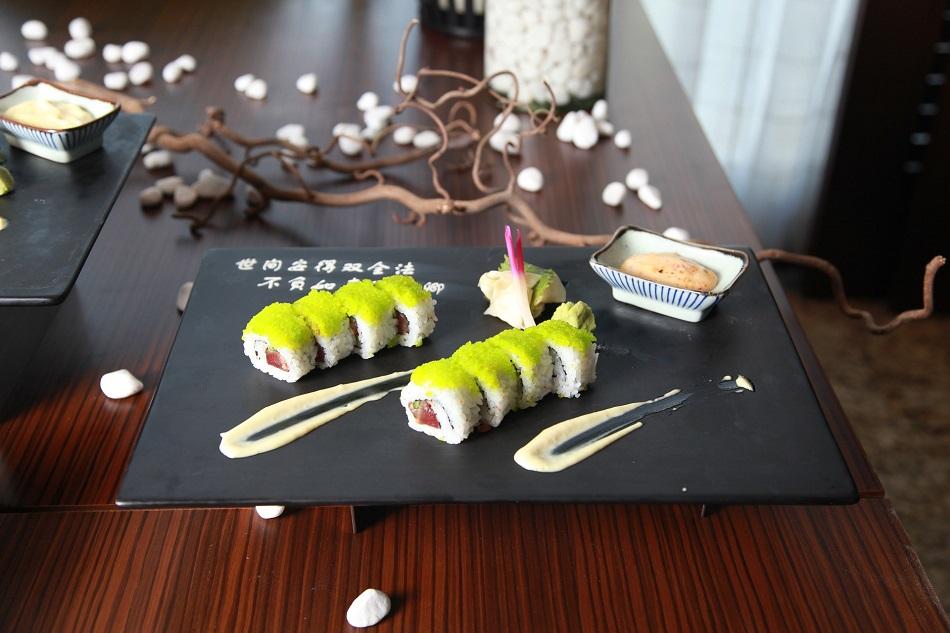
I want to share with you a few Japanese dishes you absolutely have to try when backpacking in Japan. Some of them are a bit weird, but all of them are delicious!
- Ramen soup – you can find this soup all over Japan. There are many variations of Ramen but they all have noodles, meat, and vegetables.
- Udon – thick white noodles served with vegetables, egg or meat
- Dumplings – they have different fillings – beans, pork, chicken or vegetables
- Soba – soba noodles can be served with or without soup. Vegetables, raw eggs, and meat are usually added.
- Tempura – vegetables and seafood cooked in canola and sesame oil.
Usually, when choosing a small restaurant in Japan you’ll notice that they have vending machines at the entrance. You have to choose your dish at the vending machine and pay for it. Then go to a table and you will be served your food.
12. Internet in Japan
The internet in Japan works well but it’s definitely not cheap. You can buy an internet sim directly from the airport, when you land. However, I recommend ordering your sim card online. You’ll save a lot of money!
If you’re on a budget and you don’t want to spend money on internet, make sure to download an offline map of the country. I use Maps.me.
13. Japanese dress code

Fashion in Japan is a strange thing. In the morning you’ll see people going to work, all dressed the same. White or blue shirt, blue office jacket, and blue or gray pants or skirt (for the ladies). Everybody is wearing their “work uniform” and everybody looks impeccable.
However, if you wander the streets of Tokyo, Osaka and some other big cities you’ll notice that the Japanese youth is rebel. Teenagers have developed their own fashion styles with tons of variations. Some of these styles are – lolita, fairy kei, pastel goth or decora.
Fashion in Japan is both traditional and modern. It’s up to you to decide on which side you’re on.
You can wear anything you want in Japan. However, there is only one thing that you should keep in mind. While visiting temples and shrines make sure to wear something that covers your shoulders and knees.
14. Language barrier
As a backpacker in Japan, there’s not much to worry about in terms of language barrier. Most signs at train or subway stations are in English. However, there are places (mostly rural areas) where the signs are only in Japanese.
In such situations, you can ask somebody to help you. Not all Japanese know English but if you’ll ask a few people, you’ll find somebody to help you.
Also, most Japanese working in the travel industry (bus tickets, airports, tour tickets) know English so there’s nothing to worry about. While the language barrier is still there in Japan, it can be easily overcome with a bit of perseverance.

15. Safety in Japan
Japan is one of the safest countries in the world. The chance to get robbed here is almost 0. Even if you’re backpacking Japan solo, you’re going the be safe. To be extra-safe, I recommend using a money belt.
I once forgot my purse (with money, passport, camera, and some other valuables) hanging on the chair at a McDonald’s in Tokyo. I got on the subway and noticed that my purse wasn’t there. It took me a while to go back to McDonald’s and honestly I thought that my purse was gone.
I was already trying to figure out how to get a new passport. When I arrived at McDonald’s, the purse wasn’t on the chair where I left it but an employee saw and recognized me and gave my purse back. Japan is really awesome.
16. Backpacking Japan packing list
Planning a trip to Japan but you don’t know what to pack? I am here to help you! In this section we’ll talk about the best backpack for traveling to Japan and what you need to have with you.
If you’re looking for a backpack, I recommend Forclaz Easyfit. I used this backpack for my one and a half year journey around Asia and I absolutely love it! It’s very well divided and extremely comfortable to carry.
Japan packing list
I can’t say much about what clothes you need because it depends on when you’re visiting. If you’re backpacking Japan during winter, you’ll need warm clothes. Winters can be very harsh. If you’re backpacking Japan during summer, you’re in luck because your backpack is going to be much lighter.
Below are a few items you should take with you no matter the season.
- universal charger – learn from my mistakes and take a universal charger with you!
- microfiber towel – this is a must have when traveling. Microfiber towels are super-absorbent and very compact.
- collapsible water bottle – some hostels and hotels in Japan provide free water. Having a collapsible water bottle that you can re-fill will help you save money on water.
- toiletry bag – keep your toiletries organized and save space in your backpack.
- earplugs – noisy hostels? Bring some earplugs with you!
17. Travel insurance
Having travel insurance is a must. You never know what can happen when on the road and it’s best to be insured. For your backpacking trip to Japan, I highly recommend getting an insurance from World Nomads.

18. Japan Tips & tricks
There are a few tips & tricks that will make your journey easier and safer. I will list them down below.
- book your JR Pass in advance – booking your train pass online is cheaper and more convenient.
- download Maps.me Maps.me – I use this app all around the world. It’s an offline map that includes travel routes, restaurants, and tourist attractions.
- download Google Translate – most of the time, you’ll find someone to speak English but it’s best to be prepared for any situation
- bow your head – when meeting somebody, make sure to bow your head.
- learn how to use chopsticks – before traveling to Japan, practice using chopsticks. Most restaurants only provide chopsticks.
19. Interesting facts about Japan
There are just a few more things I’d like to include in this backpacking Japan guide. I want to share with you a few interesting facts about Japan. When traveling to a new country, it’s nice to know a few things about it.
Did you know that in Japan there are more elders than children? The childbirth rate in Japan is declining because people don’t have the money or the time to have a family.
Also, Japan is the country with the most vending machines in the world. It is estimated that there are more than 5 million vending machines across Japan. It’s a convenient way to buy food, beverages, snacks or toys.
There are more than 6800 islands in Japan. Although the 4 biggest islands make up about 97% of the total land area, there are many other small islands in Japan.
There are more than 1500 earthquakes per year in Japan. Don’t panic if you feel an earthquake while backpacking in Japan. Small earthquakes happen all the time.
The last fact about Japan I want to share with you is that Tokyo is the largest city in the world by population. Around 37 million people live in Tokyo.

FAQ
Is backpacking in Japan easy?
Yes, it is. You can find accommodation for every budget and the transport system works great. The only thing you should worry about is your budget but I’ve covered this aspect in the sections above.
Can you backpack in Japan?
Yes, you can. I’ve backpacked in many countries in Asia. Backpacking in Japan felt extremely easy compared to other countries I’ve visited.
Is it expensive to backpack in Japan?
Well, it’s definitely more expensive than Indonesia, Philippines or Thailand. It all depends on you! If you choose to stay at hostels, eat from 7-Eleven, and visit lots of free tourist attractions then you’re fine.
How many days should I spend in Japan?
I recommend spending at least one week in Japan. Don’t stick only with Tokyo. Go to Mount Fuji, Kyoto, Nara or Osaka! If you really want to experience the Japanese culture, I recommend spending at least 2 weeks in Japan.
Final thoughts on backpacking in Japan
Japan is an incredible and diverse country. You can’t get bored and there are always awesome activities to do. I loved my backpacking journey through Japan and I’m sure you’ll have a great time exploring this beautiful country.
May the travel bug bite you!
